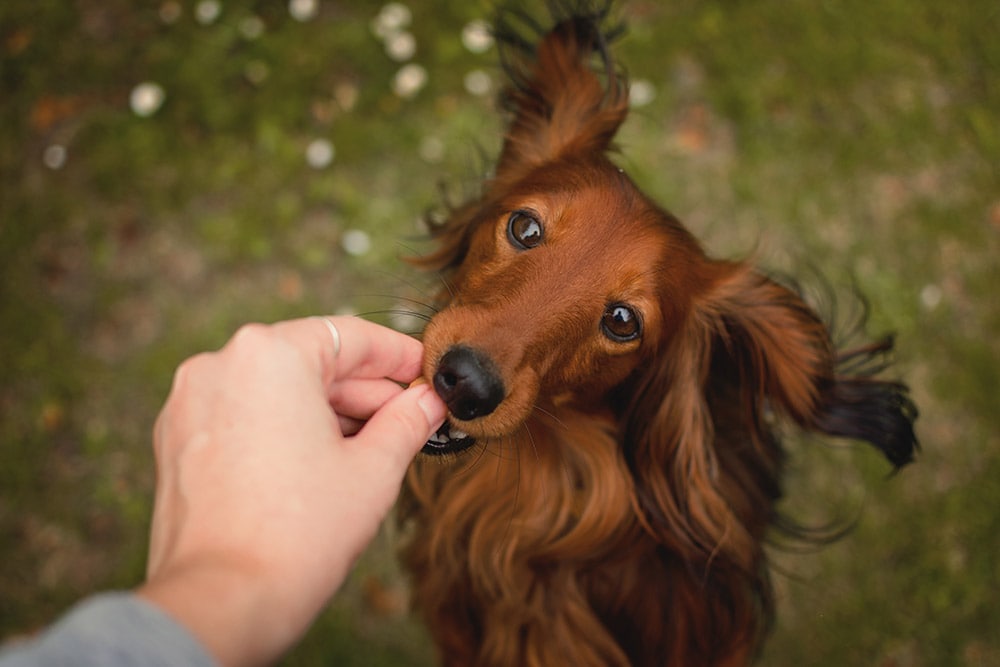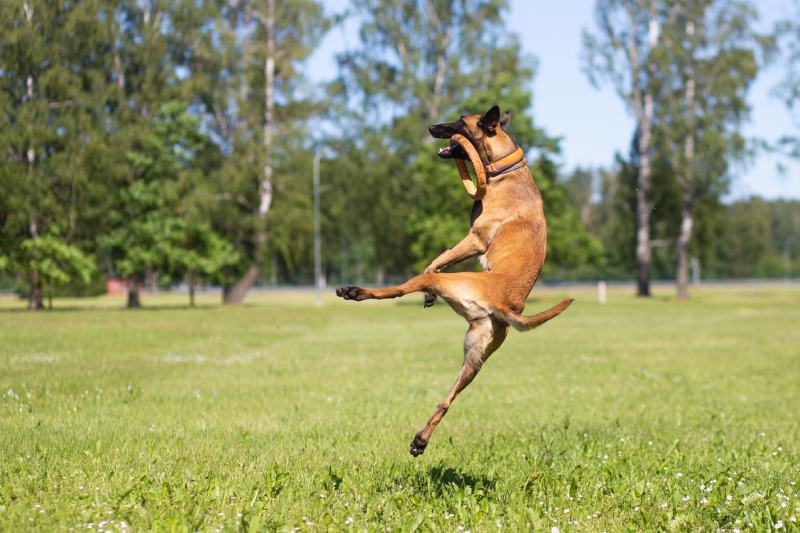Can Dogs Eat Squid? (Vet-Reviewed Facts & FAQ)
Updated on

Squid is one of the most popular options for seafood lovers worldwide, offering versatility in preparation and nutritional value. Humans may enjoy squid prepared in many forms, but can dogs eat squid? Most dogs can safely eat squid in small amounts if cooked properly.
In this article, we’ll discuss some of the health benefits the squid provides dogs and how eating it may fit into a balanced diet. We’ll also discuss how to prepare it for your dog to eat and some precautions you should be aware of when feeding.
Is Squid Healthy for Your Dog?
Squid is a high-protein food with a comparatively low fat and calorie content.1 Dogs, especially active and growing ones, need plenty of quality protein to build and repair muscles and tissues, among other functions. While dogs can produce some proteins themselves, they need about half of this required nutrient from the food they eat.2
Like other fish and seafood, squid also contains high levels of omega-3 fatty acids. These nutrients have multiple health benefits for humans and dogs. Fatty acids help decrease inflammation of all types, making them helpful for treating many conditions, including arthritis and some cancers.3 They are especially beneficial for skin and coat health.

How Feeding Squid Fits Into Your Dog’s Diet
We mentioned in the previous section that your dog has specific nutritional requirements (in this case, for protein) that its diet must meet. Because of this, most of your dog’s daily calories should come from nutritionally-balanced dog food, most commonly a commercially-prepared diet. All commercial dog food sold in the United States must meet the same basic nutritional standards, regardless of whether it’s a “premium” or “grocery-store” brand.
If you choose to feed your dog squid, it should serve as a treat, not its primary source of calories. Treats of any type should make up no more than 10% of your dog’s daily calories.4 Daily calorie requirements vary considerably based on your dog’s size, age, and activity level.
To help your dog stay at a healthy weight, ask your veterinarian to help calculate your pup’s ideal calorie count per day. On the dog food label, you’ll find how many calories per cup it contains. Use this information to calculate how much food to feed your dog each day, decreasing it as needed to account for any treats, like squid.
Precautions to Take When Feeding Squid
Dogs can have shellfish allergies, just like people. In addition, feeding any unfamiliar food can upset your dog’s stomach. If you want to feed squid, start with a small amount only and see how they react.
Like other types of seafood, squid contains mercury. However, it is considered a low-mercury seafood choice, so your dog’s risk should be minimal, especially if they eat only small occasional portions of squid.
Avoid feeding your dog raw squid due to the risk of bacteria or parasites. Eating raw food of any type could not only make your dog sick but also pose a threat to human health.5 Dogs can carry several food-borne illnesses without showing symptoms and pass them to vulnerable people, like kids or the elderly.

How to Prepare Squid for Your Dog
Squid jerky is often available as a dog treat. If you’re feeding your dog fresh squid, avoid using any seasonings, especially garlic or onion, which are toxic to them. Fried squid (calamari) is one of the most popular ways humans eat squid. However, you should avoid feeding your dog fried foods because they are high in fat and may upset their stomach.
Boiling, grilling, or baking squid are all options to cook this food for your dog safely. Again, avoid using seasonings, butter, and oil when preparing squid for your dog.
- Related Read: Can Dogs Eat Octopus?
Conclusion
Feeding your dog squid can provide it with variation in its diet, as well as provide beneficial nutrients. As long as it is cooked thoroughly, squid is typically safe for dogs to eat as an occasional treat. Before offering any new food, including squid, check with your veterinarian. Some dogs may have health conditions that make feeding squid a bad idea. And as we mentioned, feeding squid should never replace your dog’s balanced diet.












